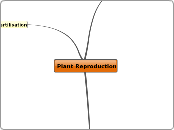av Farah Rizal för 16 årar sedan
1711
TLR Plant Reproduction
Plant Reproduction, the ACTUAL presentation we made when we figured out how the hell things worked. (I still like MindMeister better, you guys)

av Farah Rizal för 16 årar sedan
1711

Mer av detta
This is the fusion of the two Sex Cells
Female gamete, called the egg cell, is in the ovule
In plants, male gametes is in the pollen grain
Gametes are the sex cells of living organisms
2. The epicotyl elongates upwards, and lateral roots develop which are sometimes called secondary roots.
1. the testa splits, and the radicle emerges from the seed.
e.g. If a seed lands in a suitable place, it will germinate, there are a certain amounts of conditions that need to be met in a seed
Adaptations of the flower
5. Plants have a large surface area which allows them to have more chance to catch pollen on their stigma's
4.Anthers easily shooked by wind, because they are not rigidly attached to the filaments.
3.Have anthers and stigmas which project outside the flower.
2.Pollen grains are light and smooth, giving the ability to travel long distance by moving air.
1.Adapted to produce great amount of pollen so that there is more chance some of the pollen grains can reach the stigma of the flower.
5.The fertilized egg cell develop into an embryo, the ovule becomes the seed and the ovary forms the fruit.
4.The pollen then fertilises with the egg cell inside the ovule.
3.Pollen tube is formed and the pollen goes down to the ovary.
2.It lands on the stigma of the flower.
1.Pollen travels through the wind.
Adaptation of the flower
3.The 'dark lines' on the petals helps direct the insects to the nectar source.
2.Some produce nectar to also attract insects.
1.Brightly coloured petals and scent attracts insects.
Process
Adaptations of the flower: The petals are scented, the Petals are brightly coloured which attract the insects. They nectar is located at the base of the flower, which makes the insect "dig" for it, making pollen rub off onto the insect
4. The next time the same insect goes to another plant to collect nectar, the ovaries which were stuck to the insect rub off against the stigma, which will allow fertilisation to occur.
3. While it reaches it, some of the ovules made by the ovaries rub off onto the insect.
2. The insect has to reach the nectar, which is at the bottom of the flower.
1. The insects and bees are attracted towards the nectary where sugar is made, and the petals give out scent, and are coloured to attract the insects.
Diagram